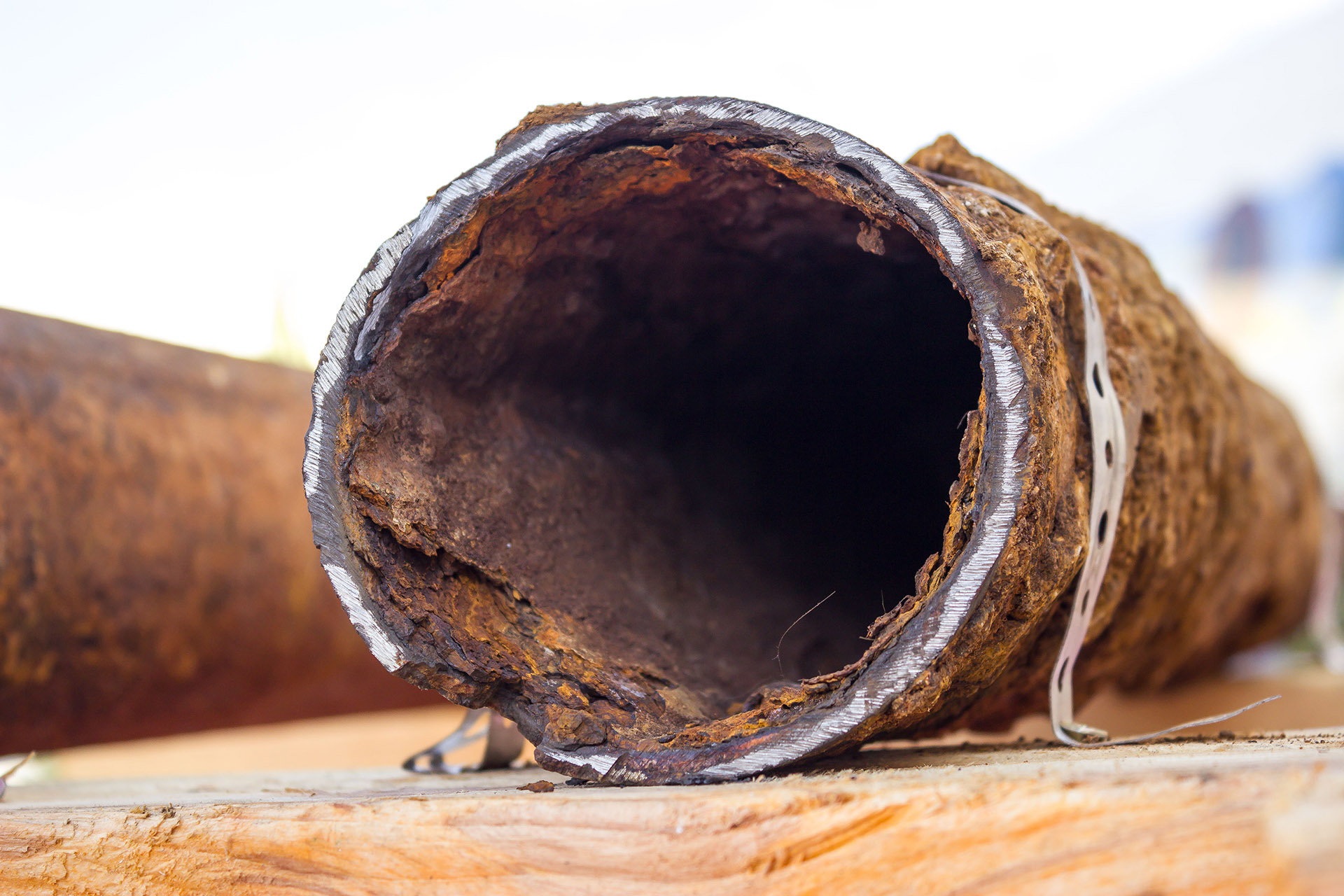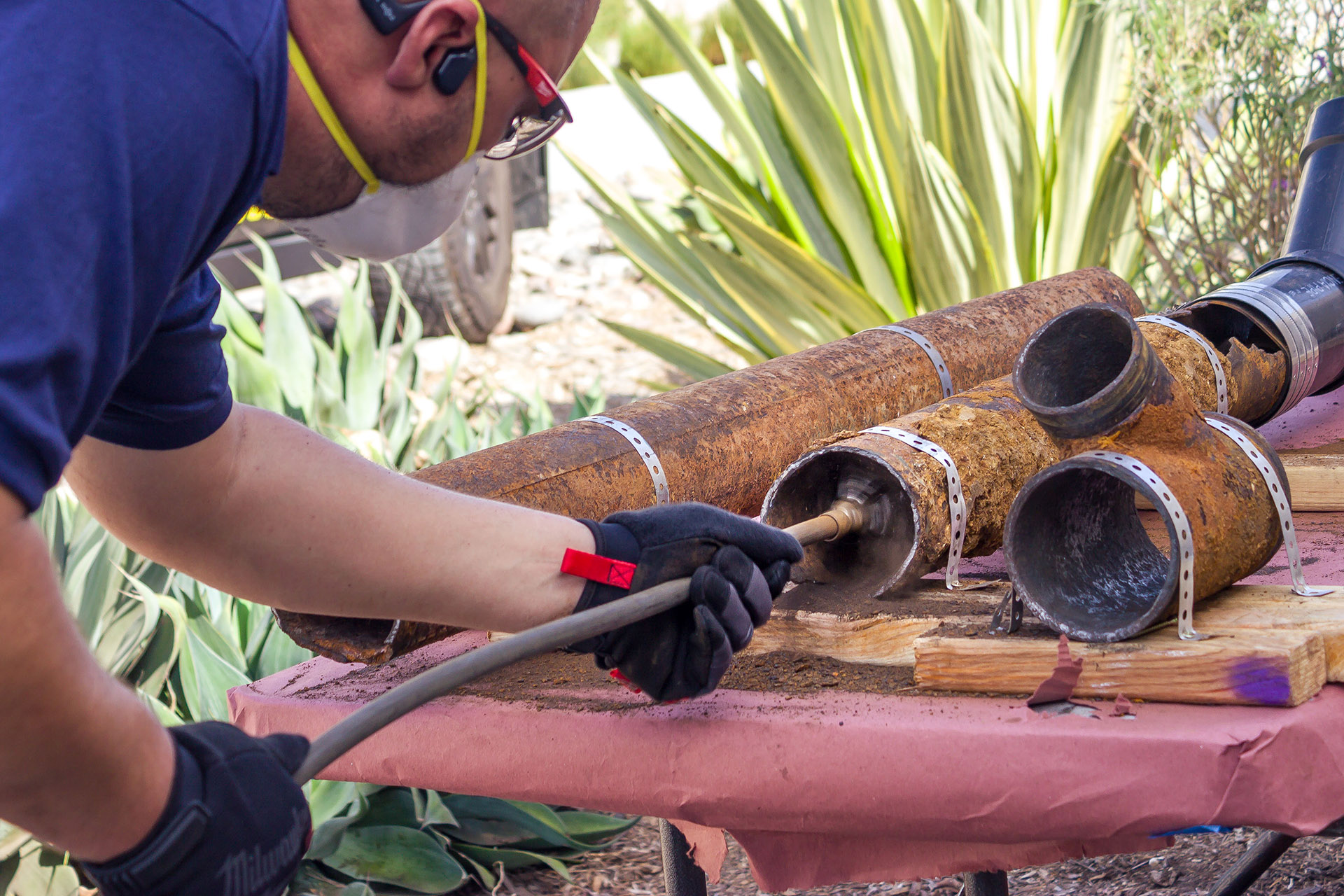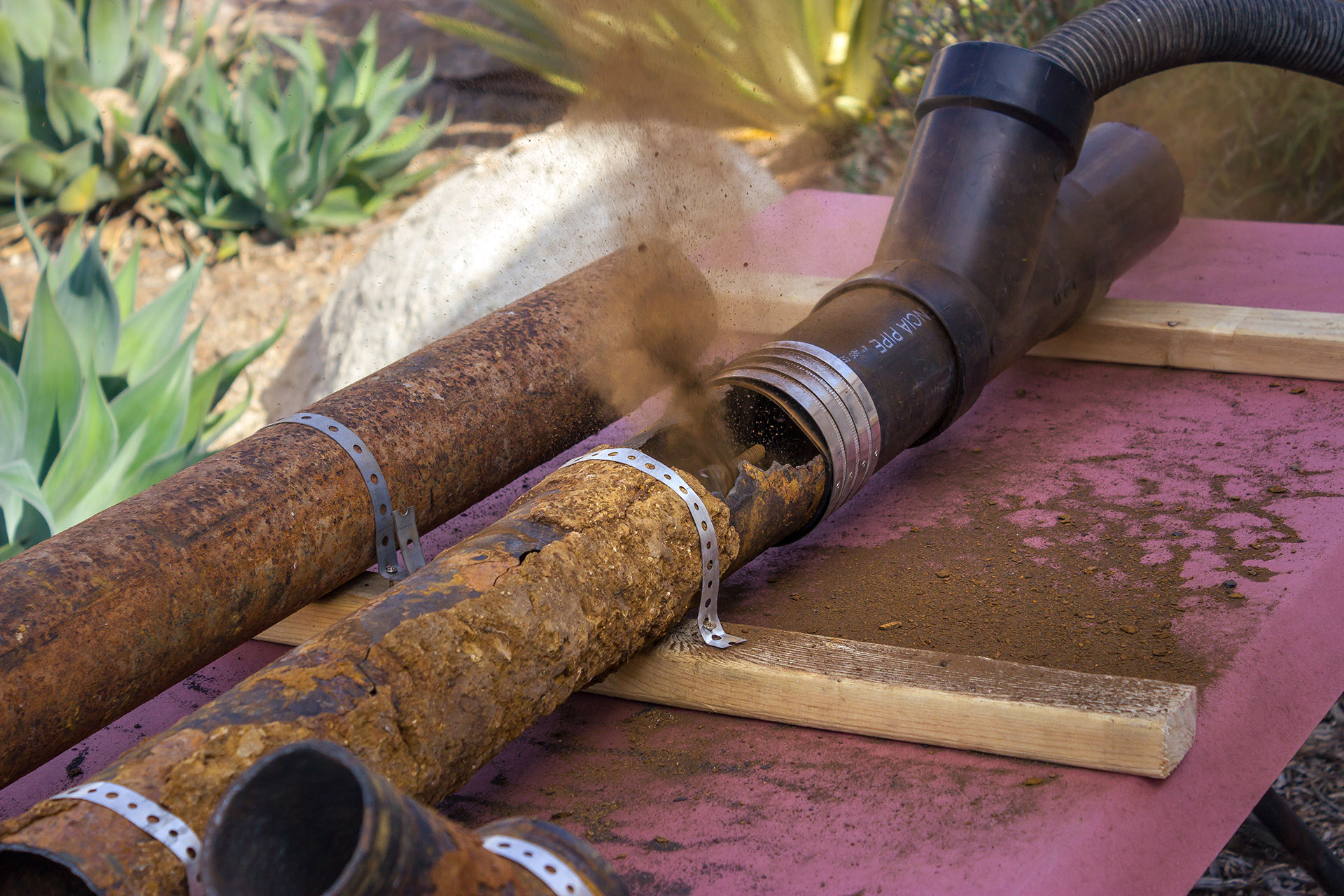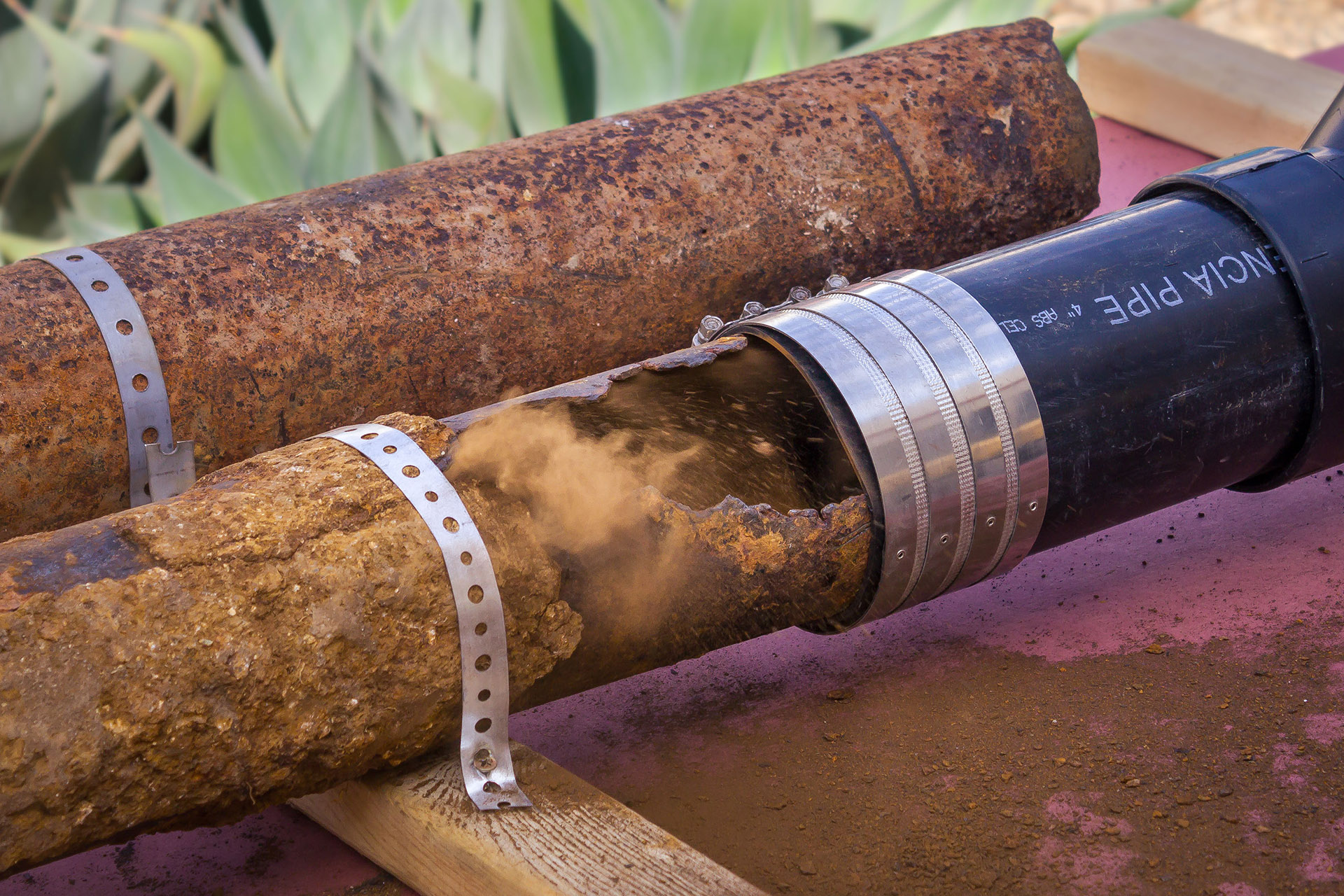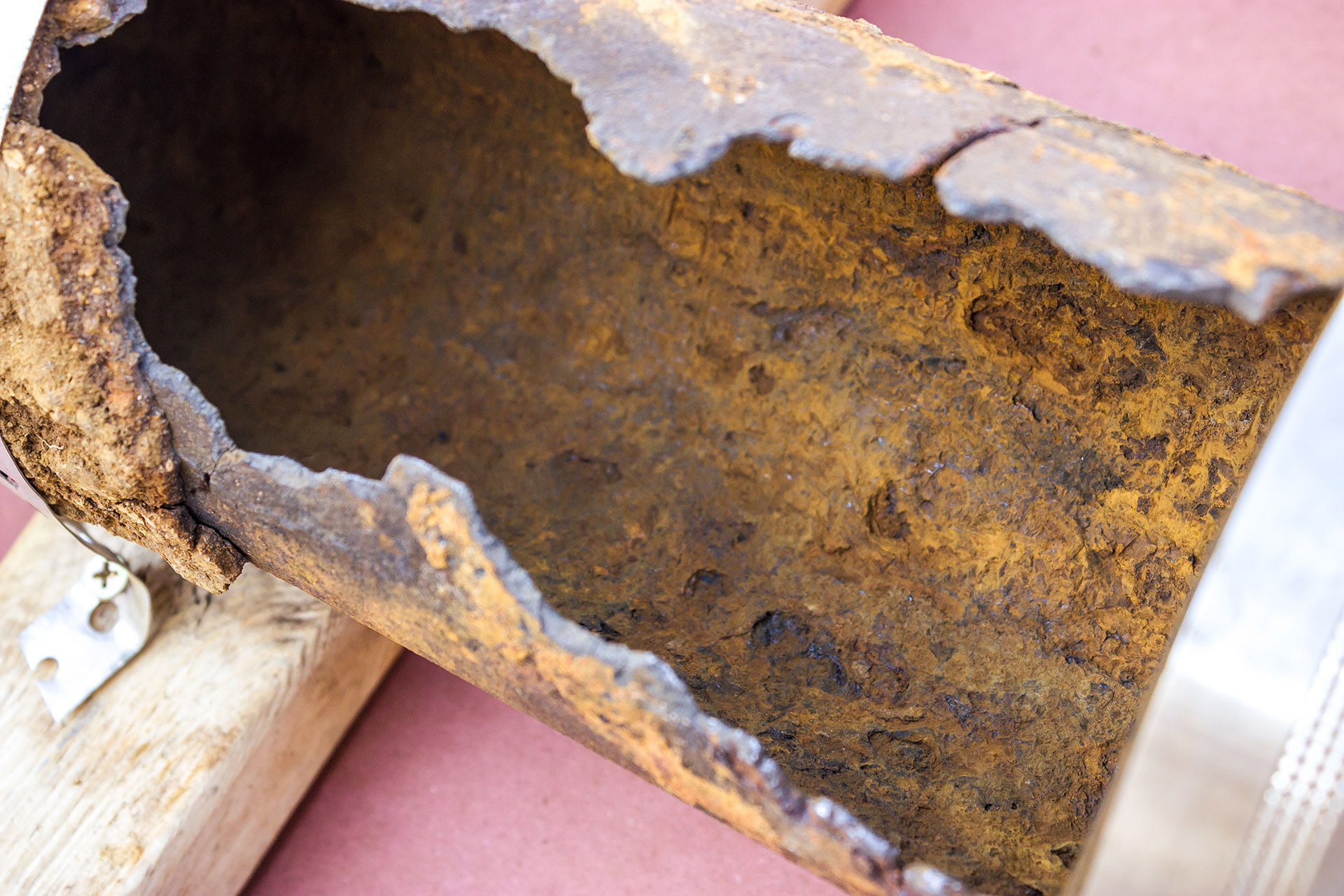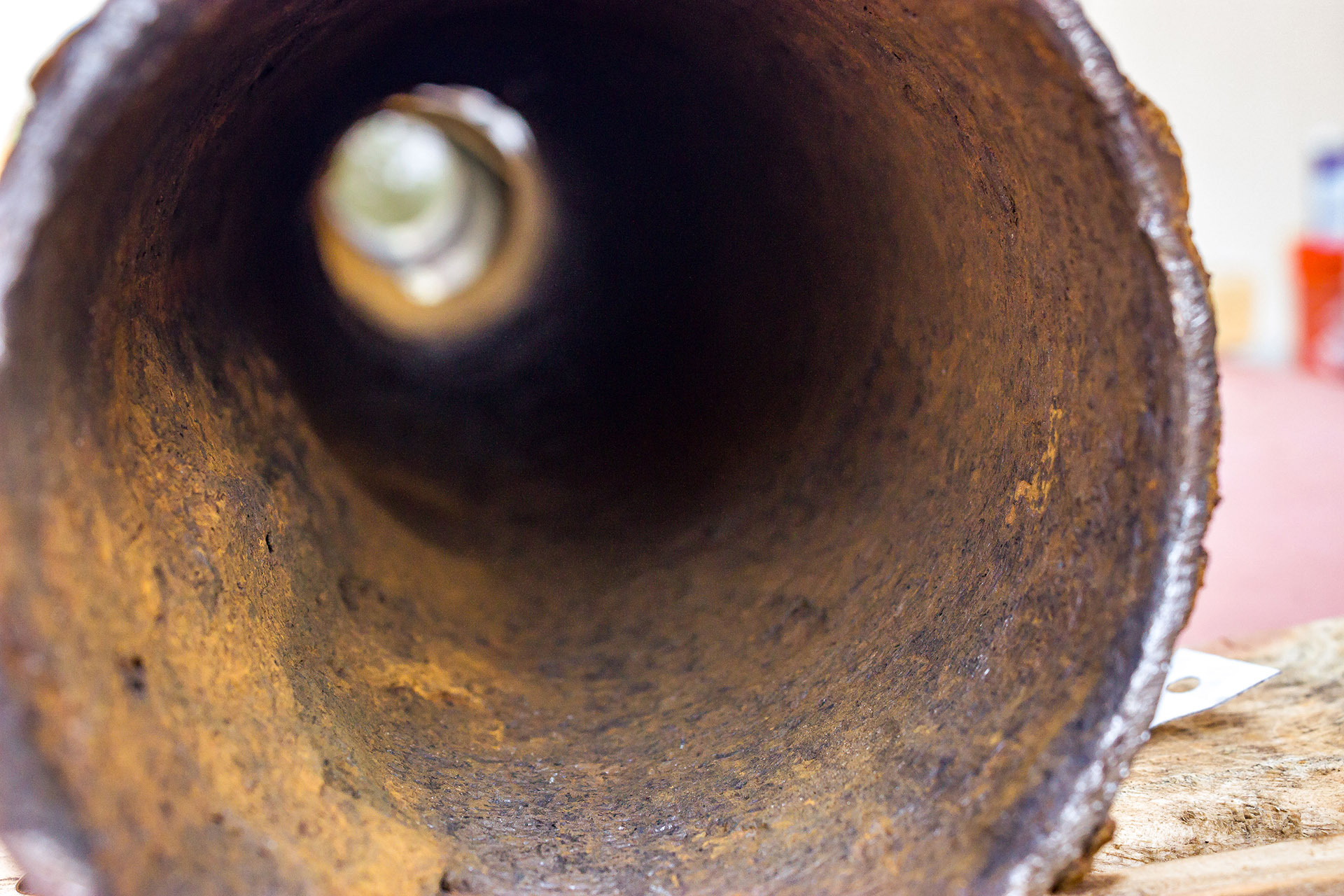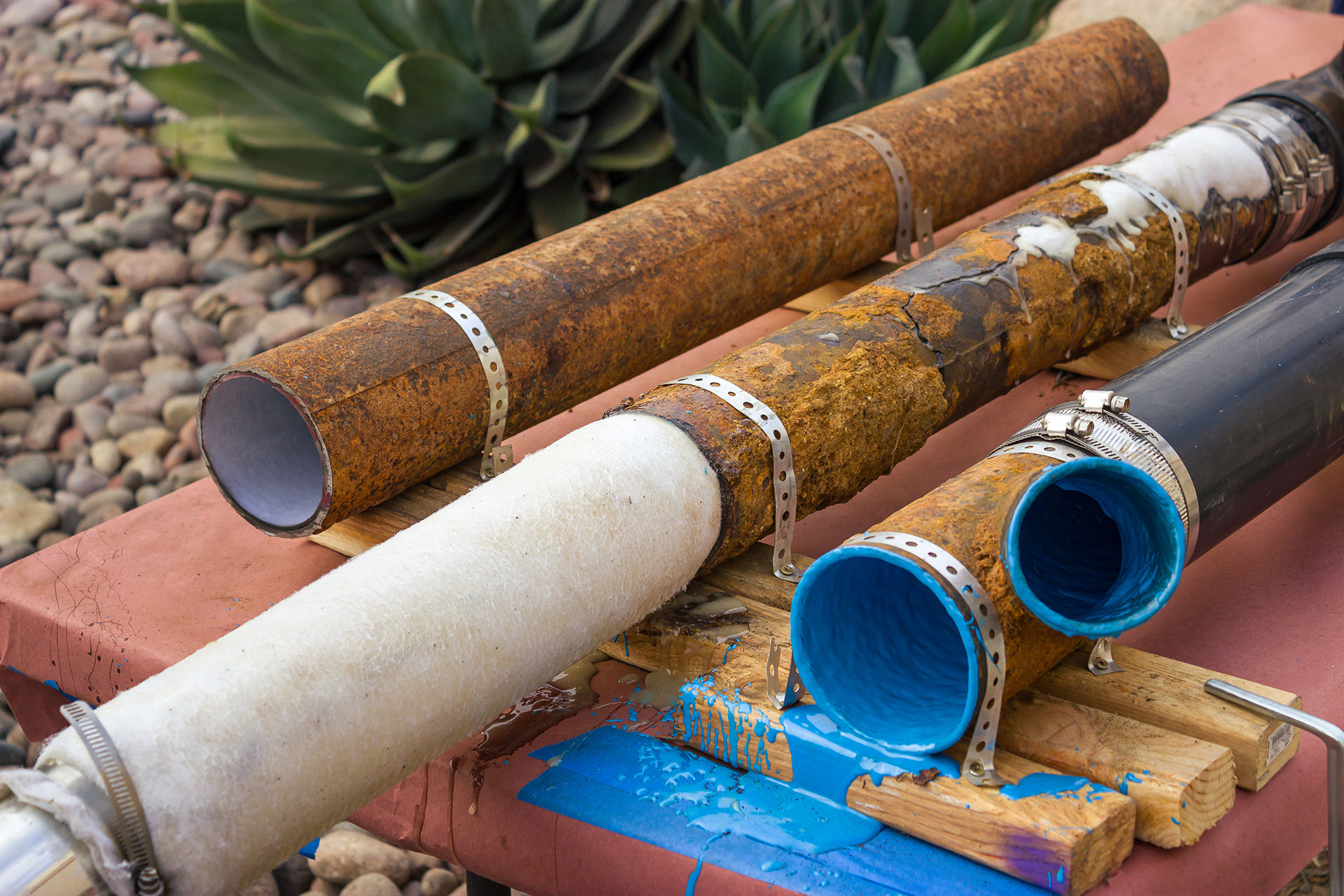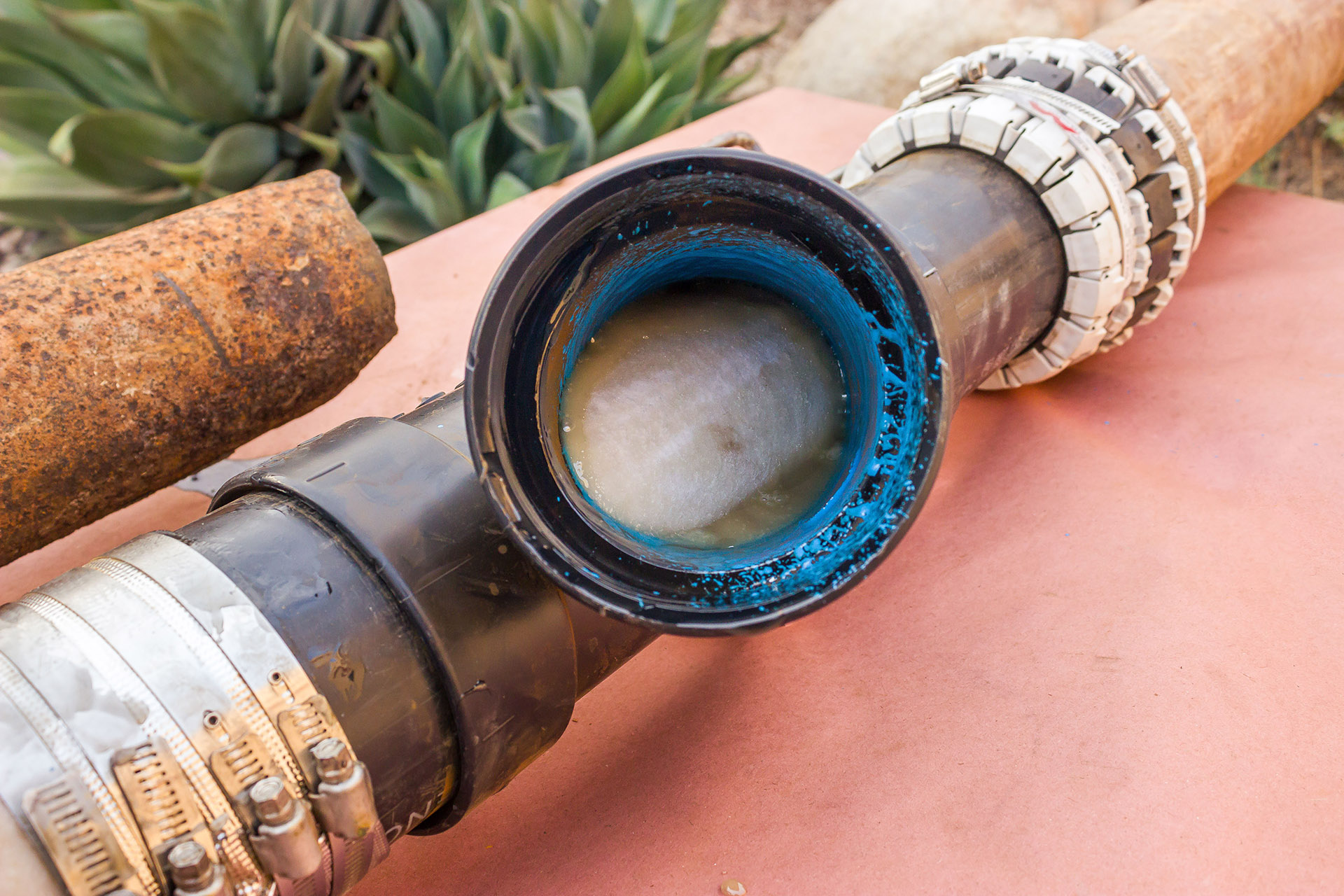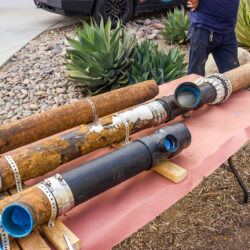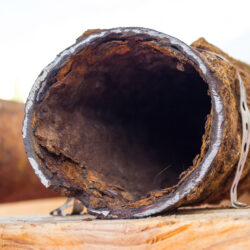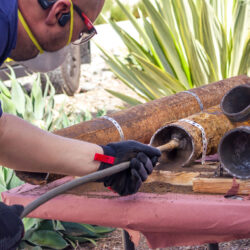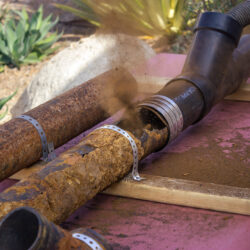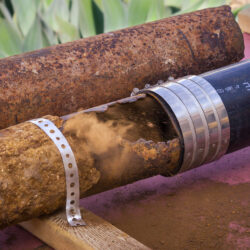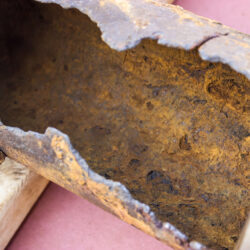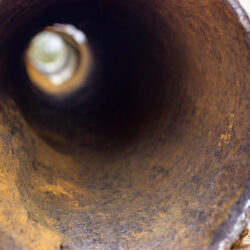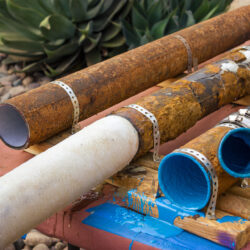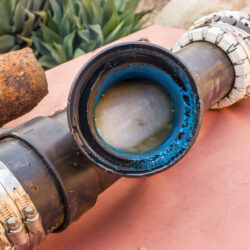Cured-In-Place Pipe (CIPP) Inversion is a trenchless alternative to traditional sewer pipe repair that also saves money on property landscaping. Without extensive excavation, this technology can preserve landscaping, driveways, and structures while restoring the integrity of old or damaged pipes. Almco Plumbing has been using CIPP inversion technology on projects throughout San Diego County to help customers avoid the hassle of cracked, corroded, or leaking pipes for the next 50 years.
This article explains the CIPP inversion process, its benefits, and real-life cases from Almco Plumbing’s sewer repair practice.
Contents
What is CIPP Inversion?
Cured-In-Place Pipe (CIPP) is a trenchless pipe repair method designed to repair damaged sewer and drainage pipes without the need for extensive excavation. A flexible liner impregnated with epoxy resin is placed inside the damaged pipe. Under air or water pressure, the liner inverts (turns inside out) as it is pushed through the pipe, allowing the resin to bond tightly to the interior walls of the existing pipe. Once in place, the resin cures (hardens) with heat or UV light, creating a seamless, strong and corrosion-resistant pipe inside the old pipe.
CIPP inversion technology works effectively with a variety of pipe materials including clay, PVC, cast iron and concrete. It is commonly used on pipes from 2 to 60 inches in diameter, making it versatile for residential, commercial and municipal applications.
The result is a fully rehabilitated pipe with improved flow capacity, leak resistance and root penetration protection. With a service life of 50 years or more, CIPP inversion provides a durable solution for aging or damaged infrastructure. The trenchless method provides a cost-effective and environmentally friendly technology for sewer and drainage repairs.
When Do You Need to Use CIPP Inversion?
CIPP inversion is an excellent solution for repairing sewers and drains that are moderately to severely damaged but not completely collapsed. It is most often used for:
- Aging & Worn Pipes. Over time, clay or cast iron pipes can deteriorate, crack, or corrode. If your system is aging and showing signs of damage, CIPP inversion can restore its integrity without replacing the entire line.
- Root Intrusion. Tree roots often penetrate pipes through tiny cracks or joints, causing leaks and clogs. CIPP inversion seals these weak spots to prevent future root intrusion.
- Leaking Pipes. If your pipes are leaking but structurally intact, CIPP lining seals leaks and restores functionality without excavation.
- Difficult-to-Access Pipes. Pipes located directly under driveways, buildings, or landscaping are difficult and expensive to excavate. CIPP inversion provides a trenchless repair option that eliminates the need to excavate these areas.
When Is CIPP Inversion Not an Option?
CIPP inversion is not the right choice if:
- the pipe is completely collapsed, because the liner requires a continuous channel for insertion;
- the pipe has significant misalignments or bellies that cannot be corrected with a liner.
In these cases, alternatives such as pipe bursting or traditional excavation may be required. Almco Plumbing’s professional survey is essential to determine if CIPP inversion is the best solution for your specific needs.
CIPP Inversion Process Step-by-Step
The CIPP (cured-in-place pipe) inversion process involves several steps to ensure a quality sewer repair. Here’s how it works.
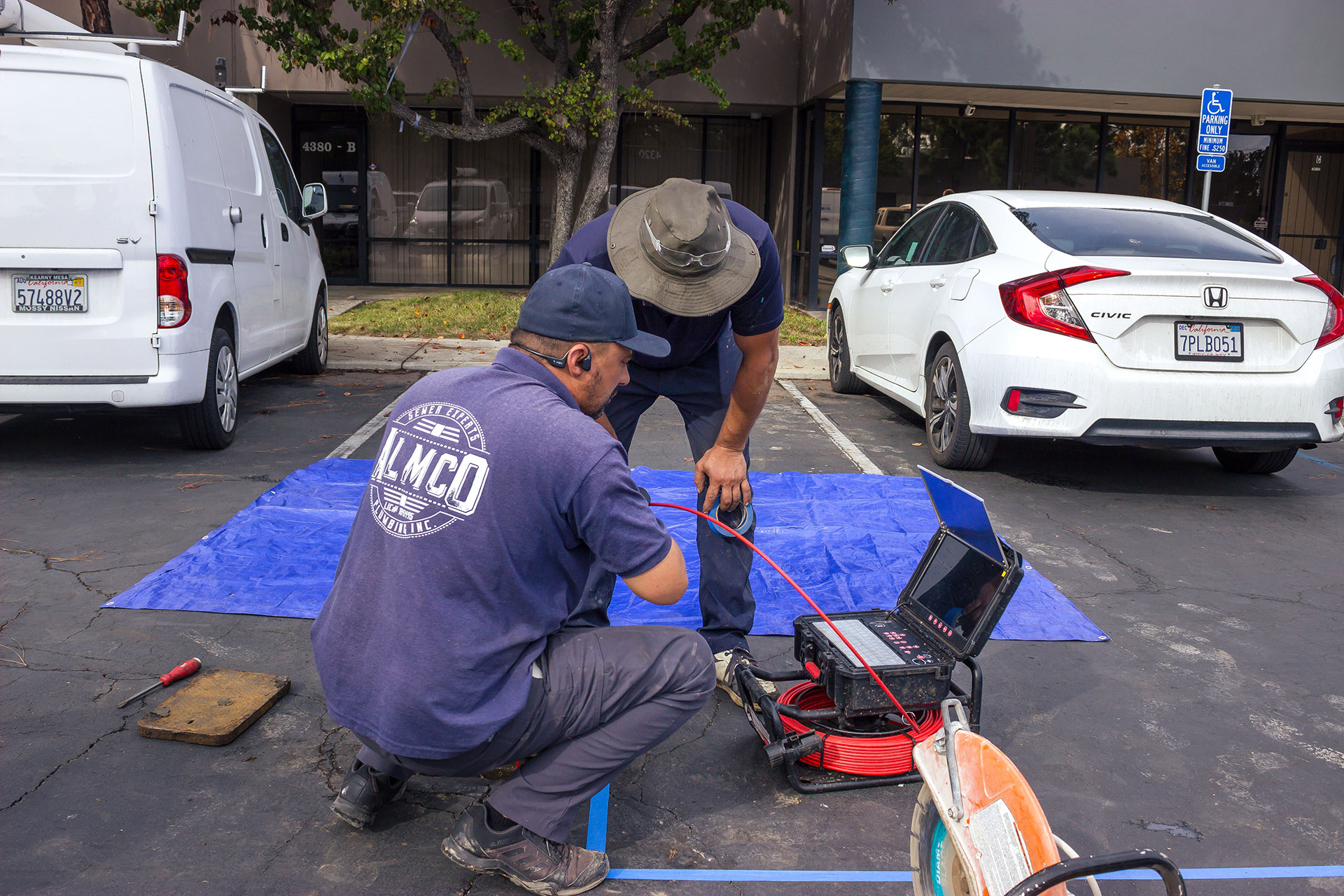
A professional plumber uses a high-definition camera to inspect the sewer. This inspection identifies cracks, corrosion, root intrusion, or other damage and determines if the pipe is suitable for CIPP inversion.
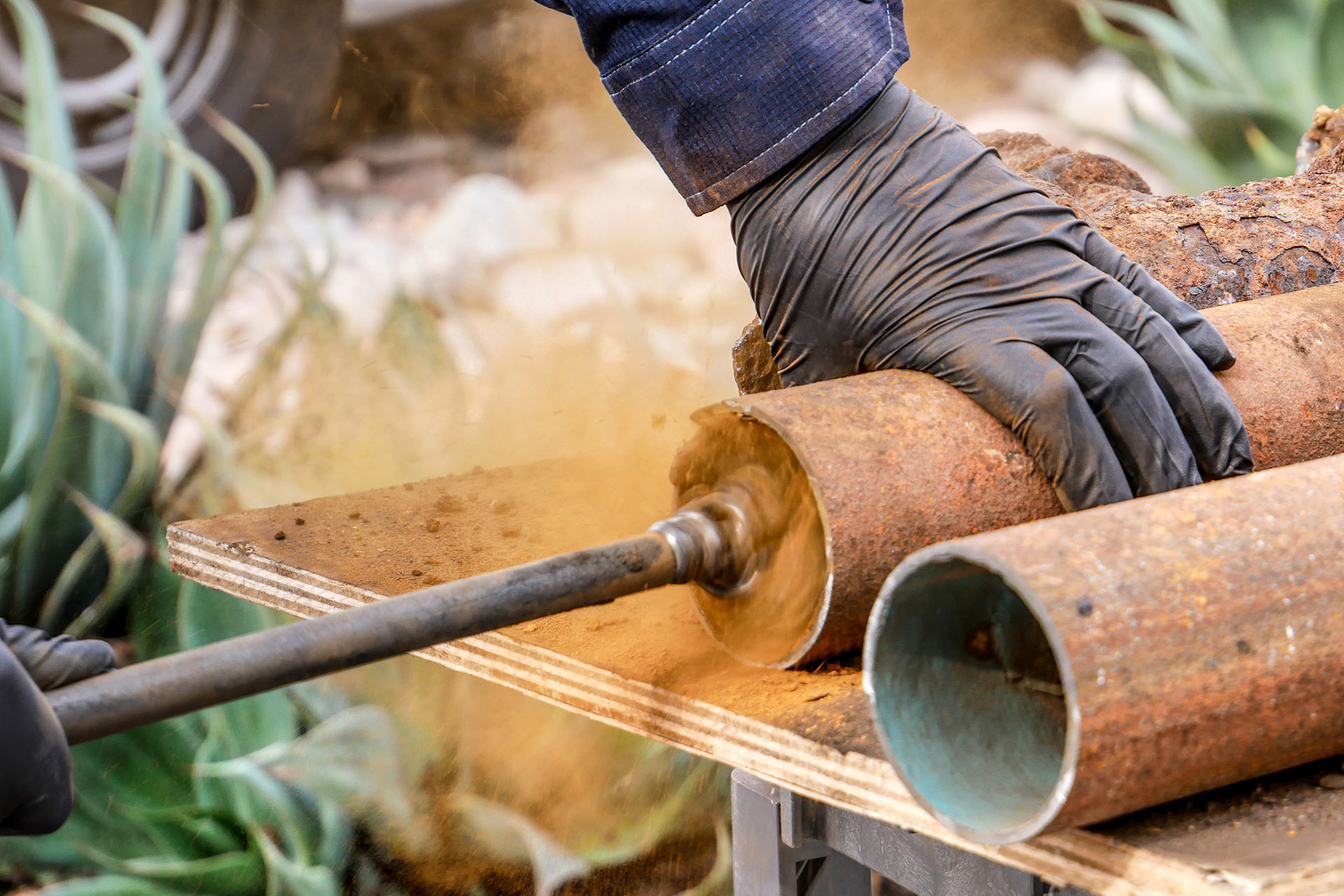
The interior of the pipe is thoroughly cleaned using mechanical descaling to remove debris, scale, and corrosion. Almco uses a carbide chain. The cleaning process ensures proper adhesion of the new liner to the existing pipe.
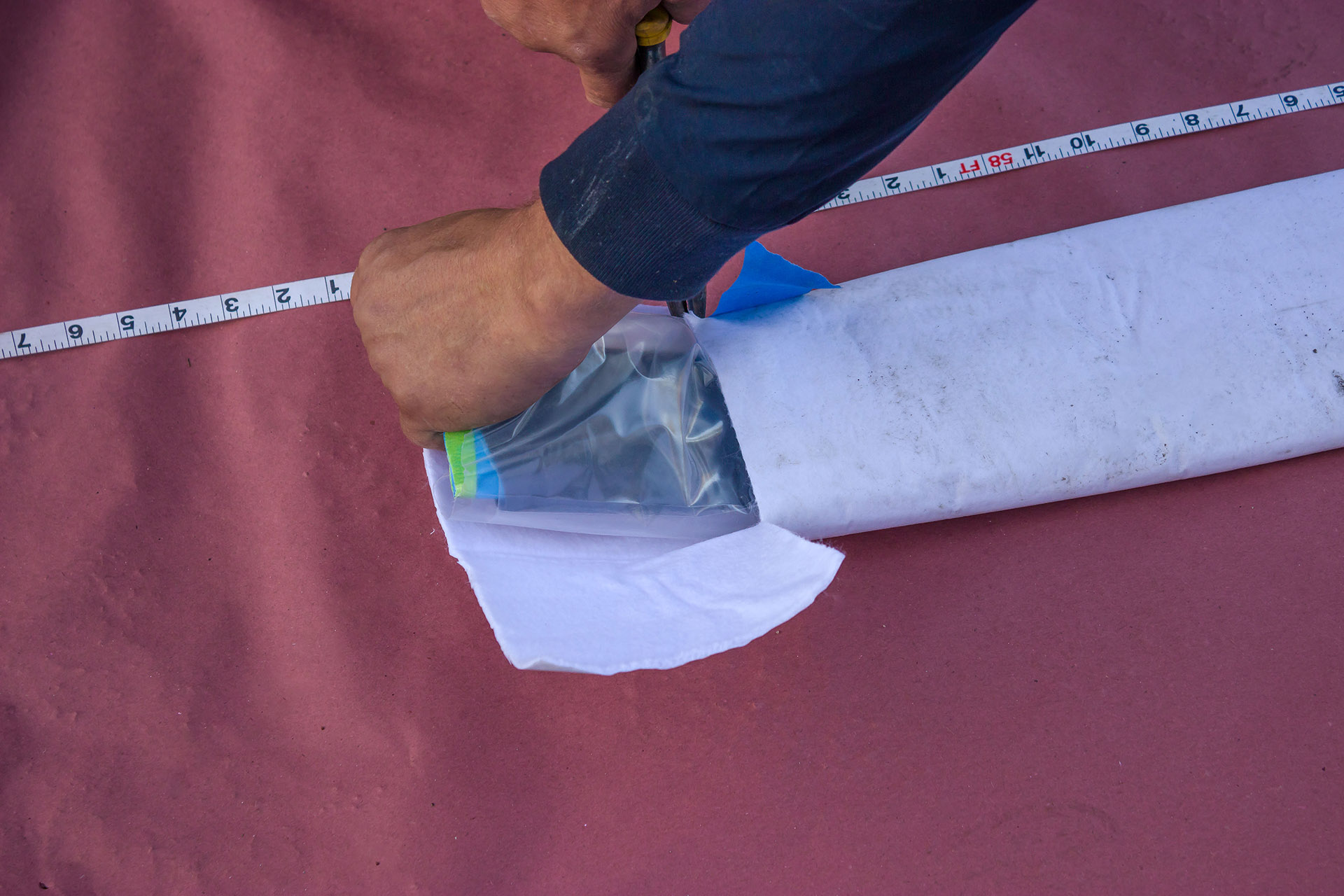
The length and diameter of the damaged pipe is measured. A specially fabricated liner, usually a flexible resin-impregnated material, is prepared to fit exactly inside the pipe.
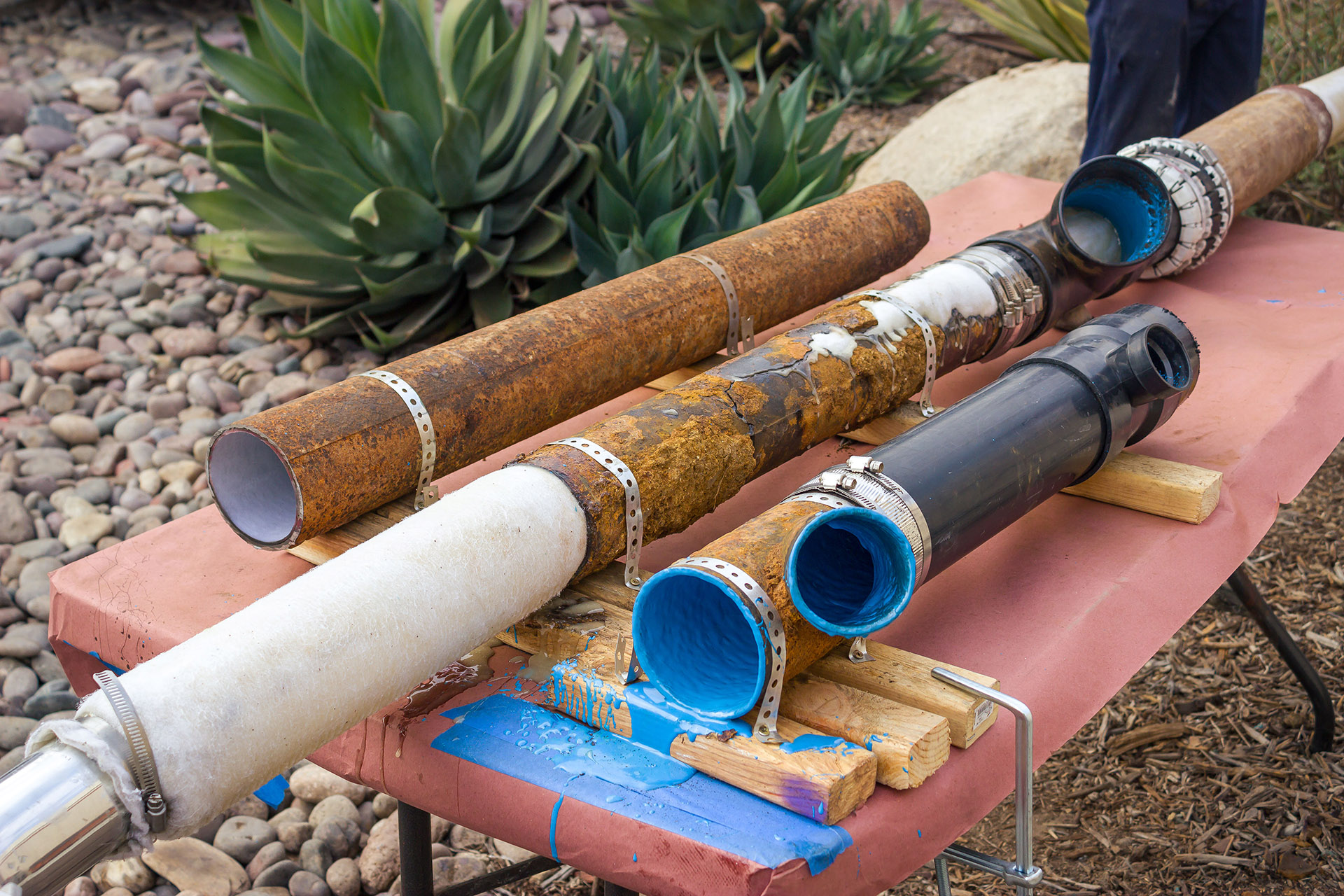
The liner is inserted into the damaged pipe using air pressure, causing it to invert and press tightly against the inner walls and forming a seamless inner layer. Once in place, the resin is cured (hardened) to create a durable, long-lasting pipe.
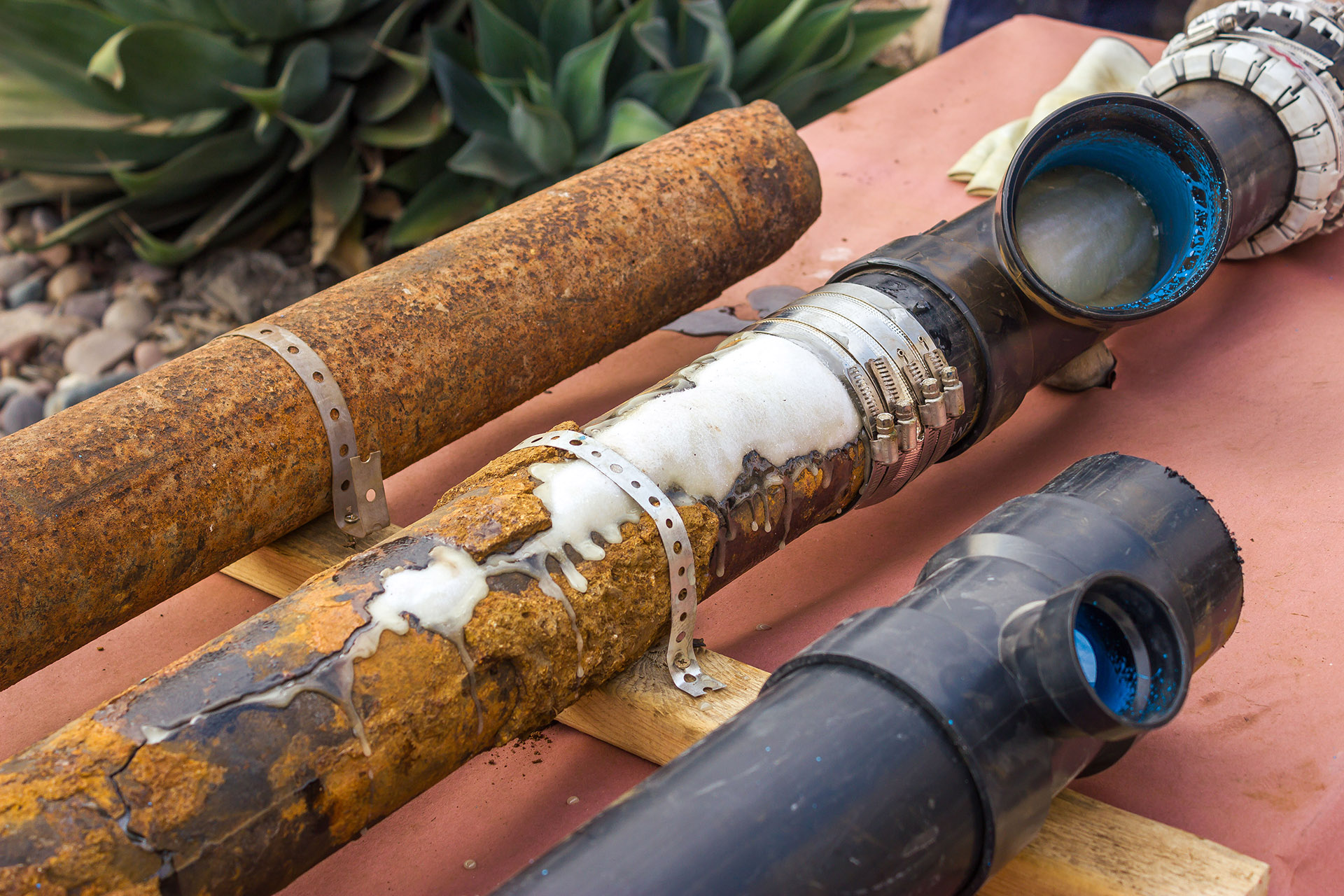
After curing, the new pipe is inspected with a camera to verify its structural integrity and proper installation. Also water flow is tested to ensure the system is operating efficiently.
CIPP inversion can often be completed in a single day, minimizing disruption to your home or business.

